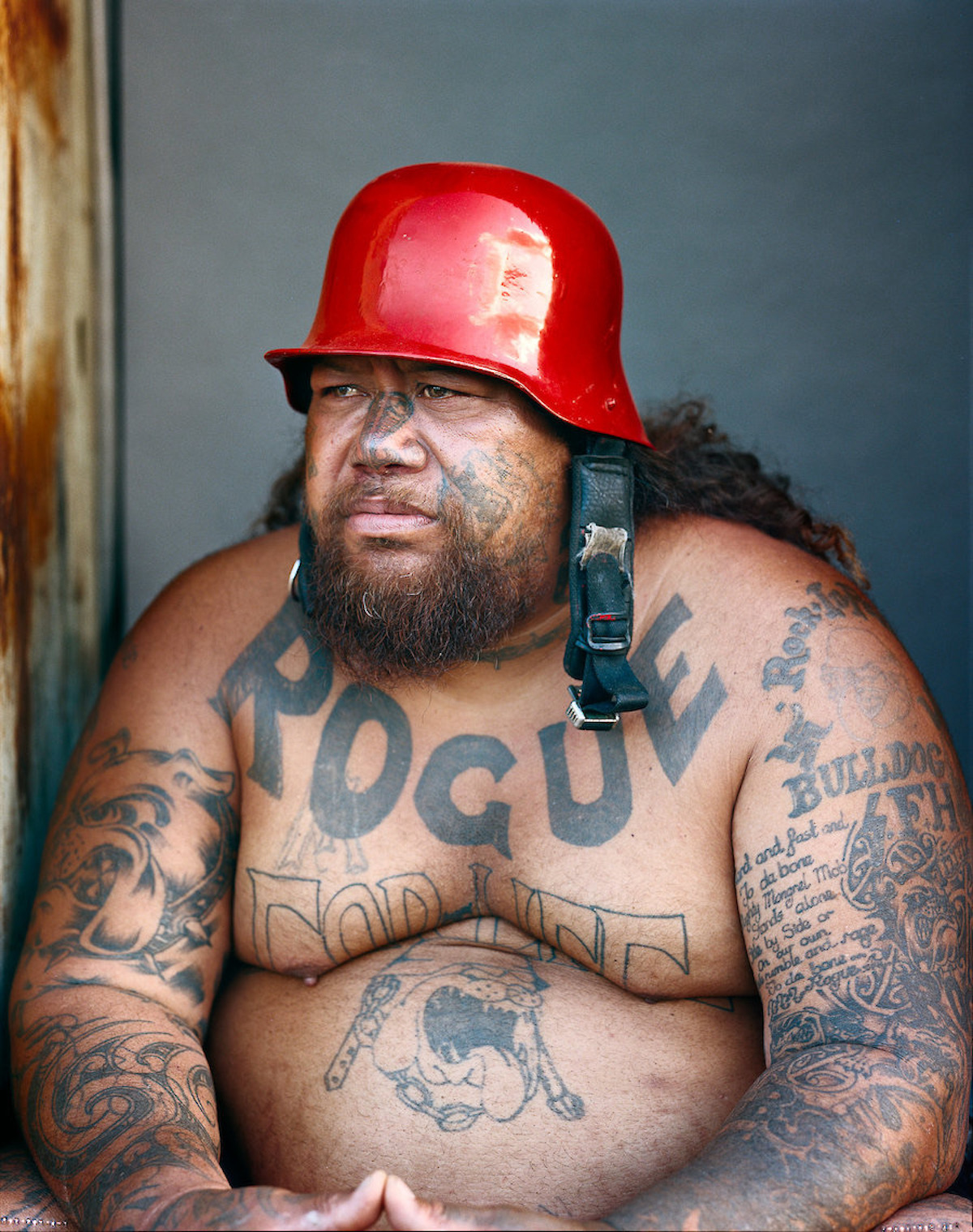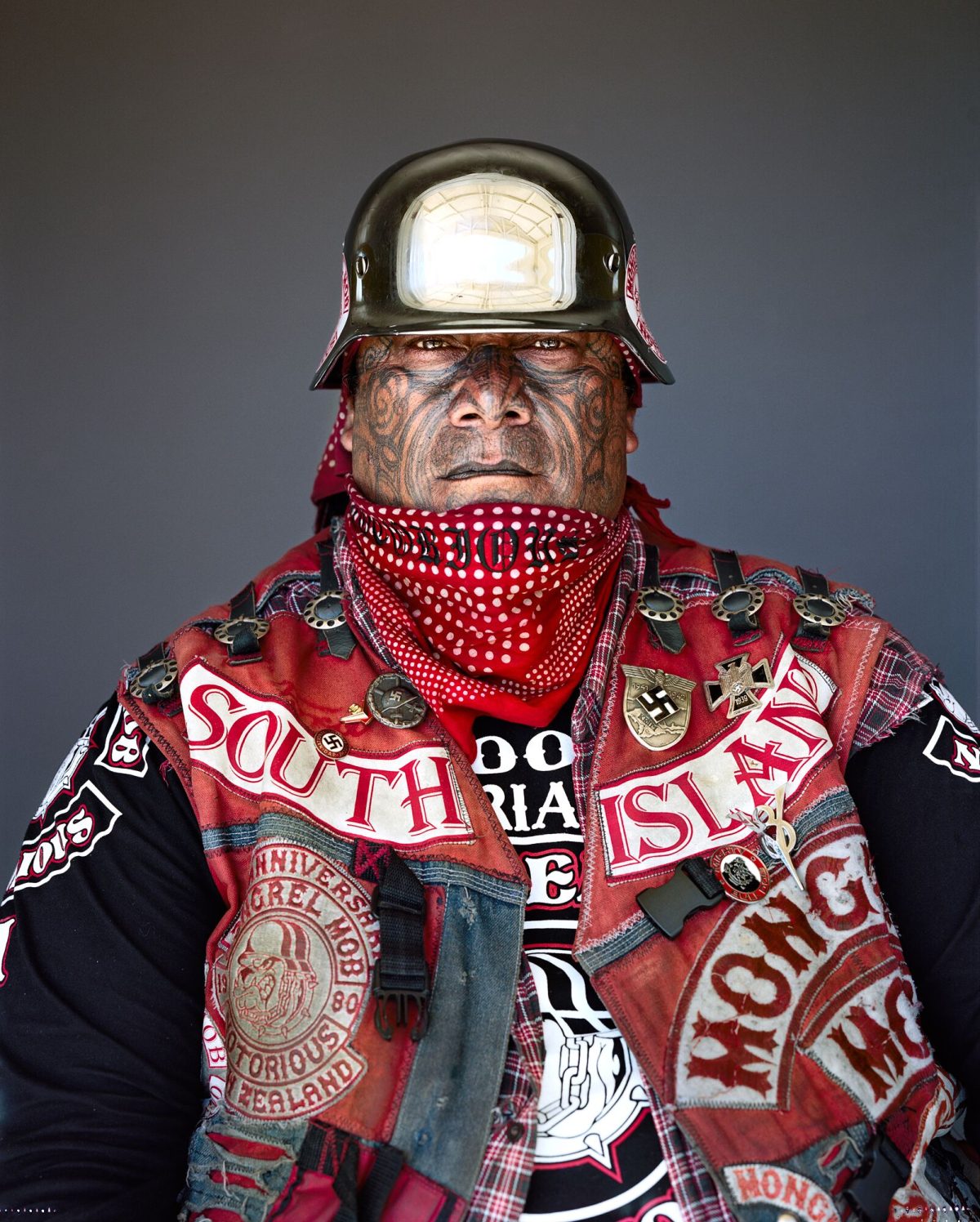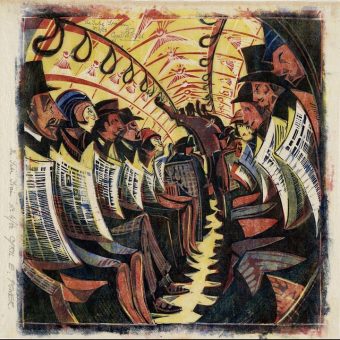
Photographer Jono Rotman’s arresting portraits of the Mongrel Mob of Aotearoa New Zealand show us the gang’s members in isolation.
To avoid controlling the narrative and anaesthetising their spirit, while “still letting them retain their mystery and privacy”, Rotman took the portraits in the subjects’ homes and clubs in natural light.
Before embarking on the project he was “thinking about male power and the extremes of how that is presented in the human experience”. A studio setting would have tilted the balance.
As he says: “On the one side, you have established modes of corporate, military and state control. For me, ‘gangism’ is on the same spectrum of group adherence. Only with gangs, it’s committing to something beyond the established social ecology.”
In the Mongrel Mob he “ultimately felt like they have the most unique identity, the most searing percolation of the forces at play.”

Big Block Rogue, President, Tauranga
Since emerging in the early 1960s, the Mongrel Mob has grown to more than 30 chapters with a carefully developed and fostered reputation produced through committing some of the country’s most notorious crimes. Early members describe the group’s inception as a response to the poor treatment and abuse they endured while in state care. Although the founding members were primarily white, the majority of today’s Mob members are Maori, a group that has, despite proclamations of shared sovereignty since the 19th century, suffered continued marginalisation and subjugation. The inequity and discrimination experienced by many of the gang’s Maori members has also fuelled the Mob’s evolution.

Zaptorious Far South, Opape, 2008. (Jono Rotman)
“Because of their trust and what was being gifted to me in their engagement, I have a responsibility to them that the work is not something that I just take away from them. The project’s relationship to them is really important to both the spirit and power of the work.”
– Joel Rotman
“I wanted to investigate what depths of human experience could be revealed in the topography of larger-than-life, finely detailed photographs – what could be seen beyond the surface – I felt this might offer a deeper insight than that afforded by the common narrative about gangs.”
– Joel Rotman

Greco Notorious, South Island RIP, from Mongrelism.
In 2014, eight of Rotman’s Mongrel Mob portraits were shown at the Gow Langsford Gallery in Auckland. The exhibition prompted criticism. Should a gang notorious for violence, drug trafficking and robbery be the subject of an art show? One of the portraits included a gang member was then on trial for murder. The victim’s father wanted the photograph removed. He met with Rothman, who listened and explained the project. Later, the victim’s father told a TV show: “It’s his work of many, many years… He is not a bad man, one of the best I’ve met. He sticks to his values. He doesn’t compromise his beliefs. I’ve learned a lot. Hopefully I’ll come out a better man.

Bruno Porirua, from Mongrelism
“It’s OK to see a black-and-white, documentary photograph of someone from a difficult environment because that representation fits into the way they’re codified within the mainstream narrative.”
– Joel Rotman

Sean Wellington and his sons

Breeze, a member of the Notorious chapter

Willy of the Mighty Mongrel Mob
The photos come together to form Mongrelism, a publication that takes the form of a gang handbook,
Would you like to support Flashbak?
Please consider making a donation to our site. We don't want to rely on ads to bring you the best of visual culture. You can also support us by signing up to our Mailing List. And you can also follow us on Facebook, Instagram and Twitter. For great art and culture delivered to your door, visit our shop.









